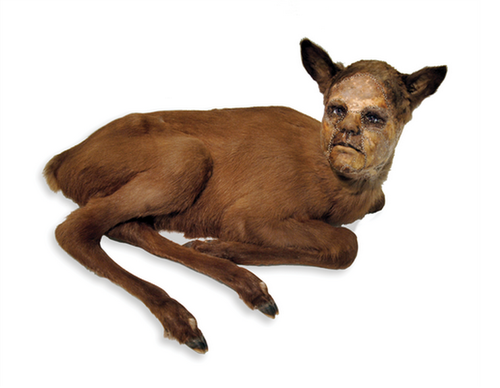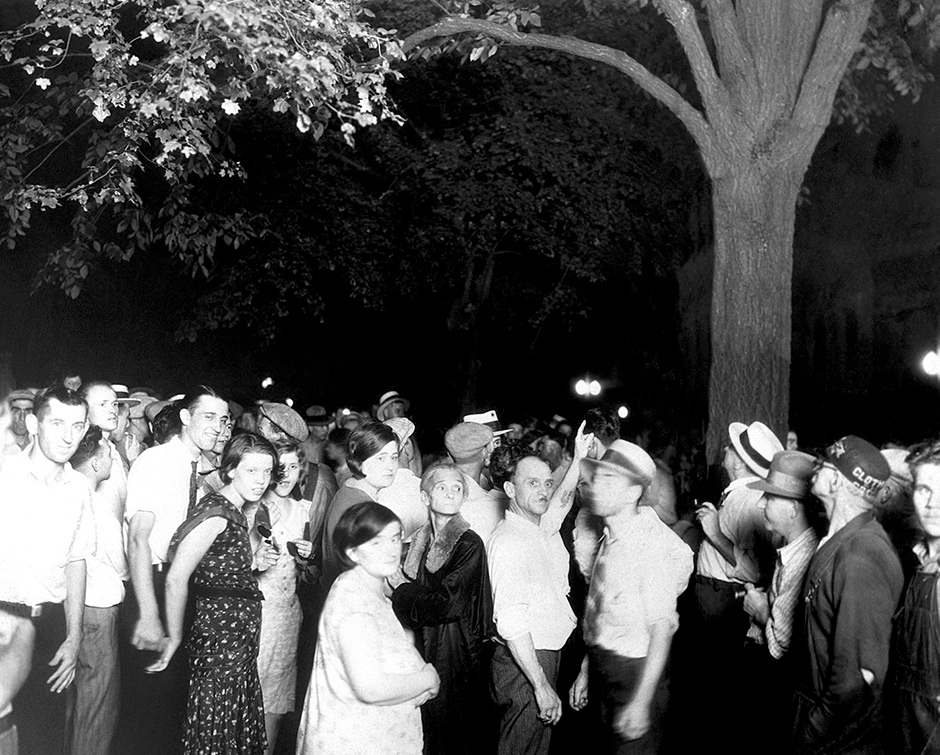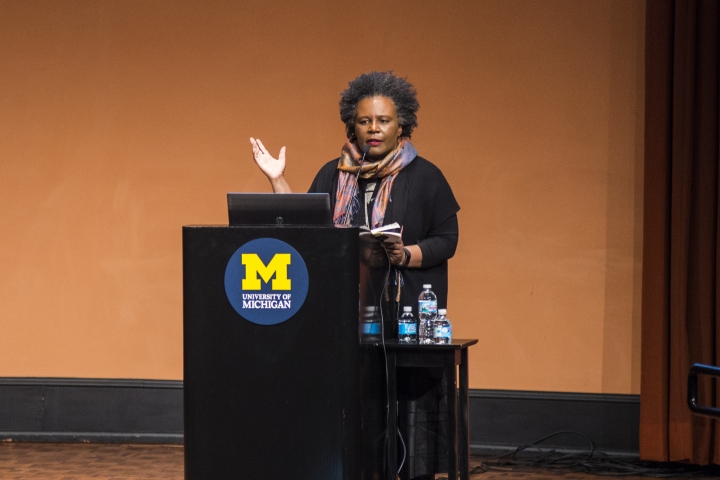Rackham Auditorium was nearly a full house for Claudia Rankine’s reading/lecture. She was introduced by a professor, who gave a wonderful recount of Rankine’s work, along with the state of race relations in America. On Rankine’s Citizen, which focuses on various incidents which might be described as “microagressions,” the professor commented that “the way racism structures our world, there is nothing micro about it.” This combinatorial discussion of both Rankine’s work and racism would be the status quo for the rest of the talk.

With images of Citizen projected behind her, Claudia Rankine began her talk. It consisted of readings interspersed with discussions about why she chose to do this or why she used this image or who this artist is. The audience got a feel for not only what the work consisted of, but how it came to be.
When she read, she sounded as if her voice was reaching out from the void, as if there was a great distance between her and you. It was like listening to someone speak from a underwater cave. By all means, it was fascinating simply to listen to listlessly–doubly fascinating when you considered the words she was speaking. She read a few sections from Citizen, which is made up of stories and anecdotes, some hers, some stolen, about being black in America. The end of one of these vignettes, which described her driving while her passenger said some offensive things, struck me as particularly beautiful: “it is also that you have a destination that doesn’t include acting like this moment isn’t inhabitable, hasn’t happened before, and the before isn’t a part of the now as the night darkens and the time shortens between where we are and where we are going.”

One of the more interesting stories she told about how the artwork in her book ended up there was the story of the image depicted above. If you do not recognize it, this is an edited photograph and in the original, several black men were hanging from the tree. When Claudia Rankine first attempted to use the photo, she found the process not as easy as for other historical photos. The owners of the photograph do not allow for it to be republished and distributed just to anyone out of fear that those people will use it to condone lynchings. So, Rankine had to call them up and explain to them that she was not a white supremacist, and after some back and forth, they let her use the image. Then, when she called back to ask if her she could edit the photograph to take out the black bodies, they agreed readily–to them, the black men hanging were the sight, the point of the photo, but to Rankine, it was the white people gathered beneath that are the real sight. It is the celebration of death, not the death itself, which makes this image so awful.
To end her lecture, Rankine played this video (note: contains graphic imagery).


